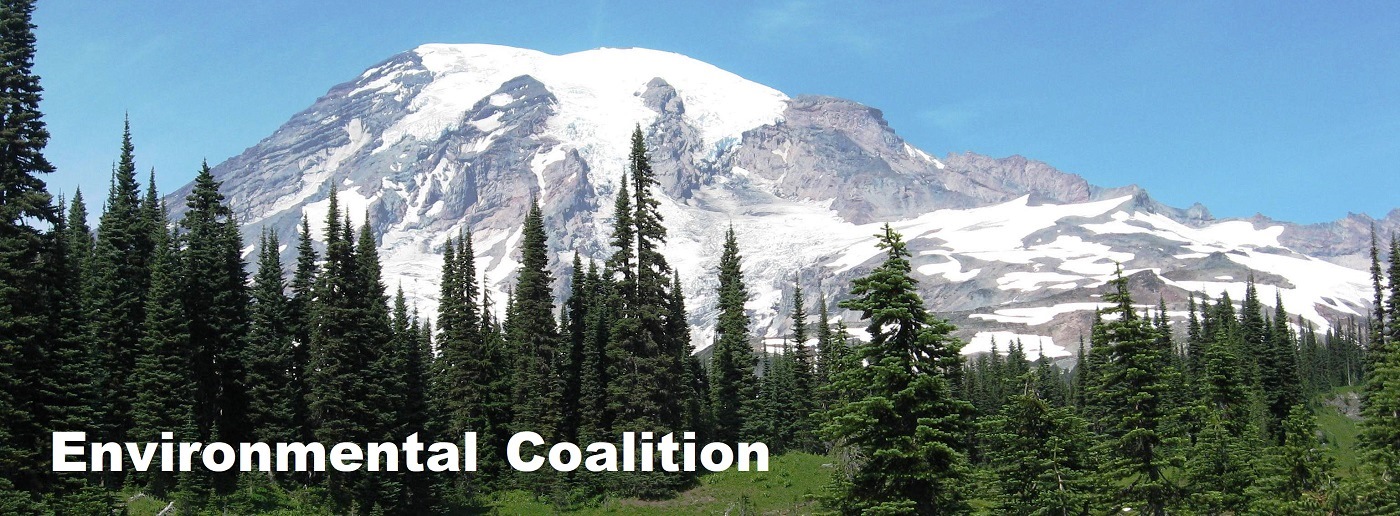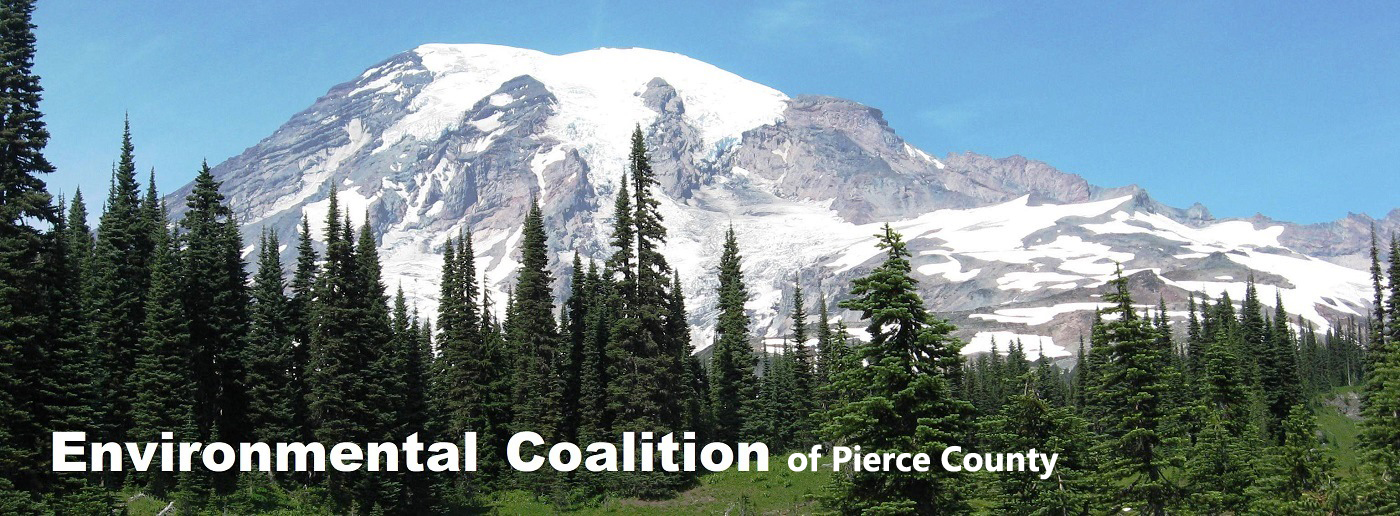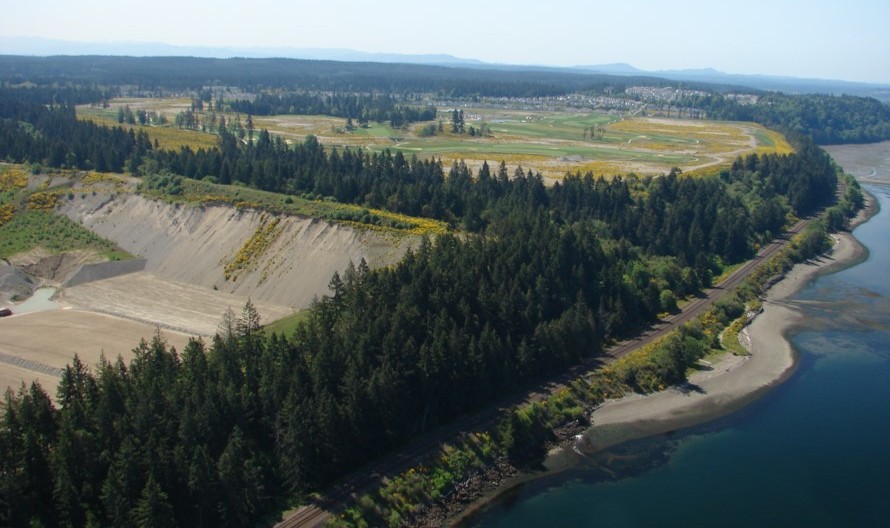Expansion of DuPont gravel mine calls for dewatering the aquifer and long-term destruction of Edmond Marsh — a favorite bird habitat. Protecting and restoring the wetlands was a part of the original lawsuit and agreement with mine owners until the city produced this recent Draft Environmental Impact Statement. _____________________________________________________________________
Edmond Marsh has been the focus of mitigation to compensate for the over 300-acre gravel mine near the city of Dupont and Northwest Landing since 1994. Through several owners of the mine, the agreement between environmental groups and mine operators has called for limiting the size of the loading dock on Puget Sound, as well as limiting lighting on the dock that would disturb birds at Nisqually Wildlife Refuge. Most importantly, the mine operators left a natural forested buffer along Puget Sound.
All this mitigation was the result of a legal challenge to protect Nisqually Wildlife Refuge, along with a cash settlement of over $1 million. Now in their final mining phase, the mine owners have called for dewatering the aquifer beneath the mine to such a degree that Edmond Marsh along Sequalitchew Creek will go dry when the mining is complete.
The proposed South Parcel Mine Expansion should not proceed. It is inconsistent with the 1994 agreement with CalPortland (former Lone Star) regarding gravel mine expansion. The agreement states (on Page 22), “WRECO and Lone Star agree to seek no permits in the future to mine in a manner that would significantly impact the flow of Sequalitchew Creek or destroy ecological conditions for native salmon populations in the Sequalitchew Creek Basin.”
In Alternative 2, CalPortland proposes to install dewatering wells and pumps to withdraw the Vashon aquifer groundwater beneath a southeastern portion of its existing gravel mine, which is the expansion area. This will lower the groundwater level to the extent that they can mine gravel, previously saturated with water, under dry mining conditions in the future.
The company proposes to discharge this withdrawn Vashon groundwater into the western end of Edmond Marsh. This would increase the groundwater discharge into the lower ravine reach of Sequalitchew Creek, but it would do nothing to maintain the vitality of Edmond Marsh, and the seeps all along the northern wall of Sequalitchew Creek would go dry.
When the dewatering pumps are turned off in 14 years, the flow in the ravine reach of Sequalitchew Creek would cease. As a result, the proposed mitigation is temporary and does not satisfy the 1994 agreement or meet the requirements of city code and city planning goals that require no net loss of wetland and stream function.
Any mitigation should occur on land that is under the jurisdiction of the City of DuPont. That land lies to the southeast of both East and West Edmond Marsh where the Vashon aquifer groundwater level is close to the surface and manifests itself in upgradient Bell Marsh, which also has to be saved and restored when mining ends.
Essentially, dewatering the Vashon aquifer to mine Vashon aquifer gravel that lies beneath the southeastern portion of the existing mine and the mine expansion area should not be permitted since there is no adequate mitigation possible for CalPortland’s proposed dewatering option.
Increasing surface water flow from Sequalitchew Lake into Edmond Marsh was intended for mitigation for dewatering the Vashon Aquifer. However, the plan to discharge dewatering well pumped groundwater into the upper reach of Sequalitchew Creek is not congruent with the initial restoration plan or any proposed amendments with each mine expansion since 2000.
Most importantly, the proposed use of dewatering wells extracted from the Vashon aquifer to restore Edmunds Marsh is a temporary mitigation. Any long-term flow in Sequalitchew Creek will cease once the pumps are turned off in 2038 when nearby mining is completed.
The Sequalitchew Creek Watershed is not a surface water driven system. Rather, it is an aquifer discharge of groundwater whose natural hydrological function has been impaired by a number of human alterations and beaver activity responses to those alterations. In the latest agreement in March 2021, CalPortland and the Environmental Caucus finalized a new agreement called the Sequalitchew Creek Restoration Plan Funding Agreement. However, the agreement has a critical flaw: nearby Sequalitchew Lake cannot be a suitable water source for Edmond Marsh and Sequalitchew Creek.
In the DEIS and in the restoration agreement, CalPortland consultants concealed the fact that dewatering the Vashon aquifer will cut off Vashon Aquifer discharge as the sole source of water in Edmond Marsh and in the upper and lower reaches of Sequalitchew Creek.
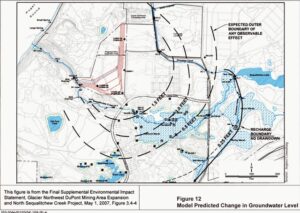
Don Russell provided explicit details in his comment document submitted to DuPont on Monday, July 15. It asks for a Supplemental Environmental Impact Analysis of a proposal that would restore Edmond Marsh and provide long-term flow to Sequalitchew Creek — which is required as mitigation in Court settlement as well as city code.
The restoration of Edmond Marsh requires two steps; the first step is to remove beaver dams. The second step is to intercept Vashon aquifer groundwater and divert it to flow into Edmond Marsh, thereby providing water flow down the canyon reach of Sequalitchew Creek.
Even with a diverted Vashon Aquifer, the flow in the lower part of the creek is dependent on maintaining the groundwater around Edmond Marsh and the creek, as well as the groundwater in the proposed expanded mining area.
Beaver Problems:
In 1998, the Department of Fish & Wildlife discontinued routine removal of beaver dams in Edmond Marsh. Since then, beavers have continued to build dams in each successive year’s surface water, which overtopped previous dams to make them even higher. In the years that followed, the beavers removed material to build dams and the stagnant water in the marsh became toxic. The beavers have moved on to surrounding areas, yet some dams still remain.
Failure of the Proposed Mitigation Plan:
The Draft Environmental Impact Statement (DEIS) lists these Unavoidable Adverse Impacts of dewatering the mine, which are listed on page 405 of the DEIS:
- “Water temperature in Sequalitchew Creek would be warmer than under existing conditions from April through September and would likely exceed the 7-day average of daily maxima criterion of 16°C in multiple months between May and September.”
- “The dewatering for mining would affect “water levels in isolated lakes and kettle wetlands would be lower by the amount of the change in groundwater levels from dewatering. The decrease would be 3 feet for Wetland 1D, 2 feet for Pond Lake, 1 foot for Wetlands #8 to #11, and 0.5 feet for Old Fort Lake.”
- “There would be periods, approximately 10 percent of the time, when flows in Sequalitchew Creek with the Proposed Action and Restoration Plan would be lower than under existing conditions.”
- “Another potential drawback of The Recovery Plan, the mitigation action is at best, a temporary action because pumping in perpetuity is not feasible. In addition, it likely would over-mitigate expected dewatering impacts to Sequalitchew Creek if active year-round (as opposed to only during certain dry or low-flow conditions)” according to the DEIS page 36.
- “In addition, the proposed restoration plan includes several contingent measures for consideration and/or further study to supplement Sequalitchew Creek flows during dry periods when no outflow from Sequalitchew Lake occurs.”
- “Many of the mitigation measures the Restoration Plan are likely, at best, a temporary action because pumping in perpetuity is not feasible,” according to DEIS, page 36.
Both Alternative 1 and 2 of the DEIS create a net loss of wetland values and functions. Both result in the loss of normal functioning of the Edmond Marsh wetland, and eliminates groundwater discharge flow in Sequalitchew Creek.
At the Environmental Coalition, our comment letter asks that the next phase of the gravel mine be in the Northwest area of the mine, and that the mine operator pay for the restoration of Edmond Marsh. No dewatering wells/pumps should be permitted, since there is no possible mitigation for CalPortland’s proposed hydromodification scheme.
To accomplish this goal, we would like to use the final mining phase to lay the foundation for a city park and develop it as a residential area instead. Weyerhaeuser Real Estate Company still owns the land. If aquifer levels drop, it would be very difficult to replace forest canopy in the area, which would provide a myriad of benefits to future residents and wildlife, as well as carbon sequestration.
Such restoration was in the original 1994 agreement that called for “No significant direct impacts to the kettle wetlands or to the salt marsh would occur. The kettle wetland with the mining area would be avoided during mining activities and a 200-foot buffer of undisturbed native vegetation is proposed.”
The two alternatives considered in the DEIS are not consistent with the long-term goal to preserve Edmond Marsh. They are in violation of the Critical Areas Ordinance and the City of DuPont’s 2015 Comprehensive Plan. The proposed South Parcel Mine Expansion is not consistent with the 1994 agreement with CalPortland (former Lone Star) over the expansion of the gravel mine. The mining would significantly impact long-term flow of Sequalitchew Creek. The DEIS lists the unavoidable impacts to Edmond Marsh by using a temporary dewatering pumping solution for mitigation.
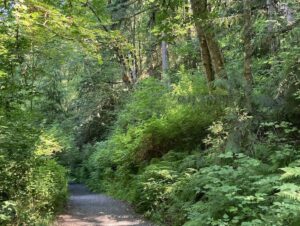
Dupont Critical Area Ordinances:
Dupont municipal Code (DMC 25.105.010: “Directing a policy of no net loss of wetland and stream function, value, and area within the city. In DMC 25.105.010: Preventing, to the extent practicable, adverse cumulative impacts to water quality, wetlands, stream corridors, and fish and wildlife habitats using best available science”
Municipal Comp Plan Goals:
Natural Environment Goal NE 1.1 Calls for “preserving environmentally sensitive areas and by working with “affected parties to restore and improve the flow of water through Sequalitchew Creek.” and finally in NE 5.1 “Maintain and where possible restore and enhance ecological functions and values of the Sequalitchew Creek Watershed, lakes, marshes, streams, wetlands,” and in NE 5.3. maintain important wildlife habitats and function wildlife corridors to link important natural areas such as Edmond Marsh and Sequalitchew Creek.
This DEIS does not implement the agreements of 1994, 2011 and 2021 that called for the permanent wetland function of Edmond Marsh in the 1994 agreement “to seek no permits in the future to mine in a manner that would significantly impact the flow of Sequalitchew Creek.”
Groundwater Interception to be Studied:
To meet the original requirement of the mitigation plan, A Supplemental Environmental Analysis should review the proposal to build an intercept canal filled with Vashon Aquifer ground water flowing from the southeast to northwest flow by constructing a groundwater interception and discharge fed into Sequalitchew Creek all along the eastern boundary of Edmond Marsh as shown in red on the illustration below.
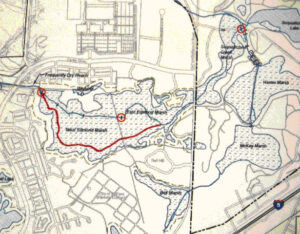
Map shows an alternative to be studied, indicating the interception of southeast to northwest subsurface groundwater flow of the Vashon Aquifer by constructing a groundwater interception and discharge fed into Sequalitchew Creek all along the eastern boundary of Edmond Marsh _____________________________________________________________________
Contrast this restoration proposal to the DEIS proposed action, which would uses warm, low dissolved oxygen concentration of surface water flow from Sequalitchew Lake that includes additional stormwater runoff and other surface water flow from Bell, McKay and Hamer Marshes which will not meet clean water standards. Clearly, the proposed Alternative One’s Restoration Plan is critically flawed — it will not restore the Edmond Marsh wetland.
The DEIS and its alternatives do not provide a viable mitigation option to offset the permanent damage from dewatering and for the expansion of the mine below the agreed-upon 10-foot groundwater level. As proposed, this restoration plan for the Sequalitchew Creek and Edmond Marsh would result in the permanent loss of existing conifer forest/scrublands, the existing kettle wetland, and associated wildlife habitat on the site around Edmond Marsh.
